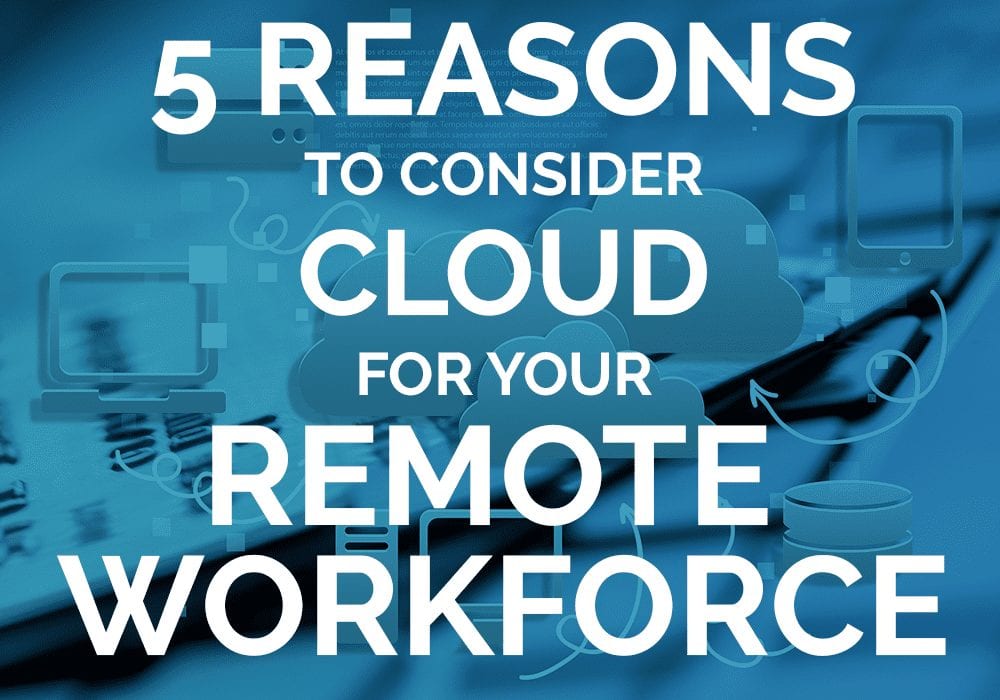In this article, we'll discuss how to work from home, how to stay productive and secure, and what tools you might want to consider to do so.
Technology has enabled us to work remotely and we've seen a huge increase of that in the last decade, especially now with COVID-19 forcing businesses into a remote work policy.
Telecommuting offers wonderful benefits to companies and workers alike, with an improved work-life balance topping the charts. People who are working from home are also likely to be more engaged in their jobs, and being engaged can lead to higher profitability, mobile productivity, customer engagement, and other positive business outcomes.
However, remote teams cab experience problems of their own. At the forefront is the disconnection that naturally occurs when team members work separately from the rest of the team. If partially remote, with some workers in the office, remote workers don't get the same experience of office culture. However, with it becoming the 'new norm' many leaders are looking at alternative options to built culture remotely through online games and events, message boards, regularly scheduled video meetings and more.
If you’re new to working remote, here are some things you can do to make your experience as successful as possible:
-
Communicate, communicate, communicate—It’s important to let your team know when you’ll be away from your desk for any extended period of time - whether that means homeschooling your kids, running an errand, or getting in a workout during your lunch. That way, they’ll know when you’ll be back in case they have anything pressing. Teams work better when members know what to expect of each other. If you have a communication software like Teams (or Skype), Slack, or Zoom, maybe sure to use the status setting. You can customize a message such as 'out for lunch' or set your status simply to 'Away' so they know you're not at your desk.
-
Always meet your deadlines—This should go without saying, but it’s important to make sure you aren’t slacking off. Work-from-home productivity is at least as good as in-office productivity, if not better. Don’t be the one that causes your boss or co-workers to lose faith in the system. If you need help, check out a task planning tool like Microsoft Planner, Monday.com, or Basecamp. While paper and pen are great, this allows your team to collaborate and track progress
-
Use technology —While email certainly has its place, other technology—such as instant messaging, conferencing, etc.—helps you connect with team members in the moment. Because you don’t have the ability to stop by a co-worker’s desk or see team members at the water cooler, you should take any opportunity you can to create conversations and collaboration when appropriate.
-
Visit the office (if it's safe)—Some remote workers may not live close enough to visit the office, but—depending on your role—regular time spent in the office is crucial to team cohesion. In a pre-COVID world, getting facetime in the office was highly recommended as a way to keep in touch and build relationships. Until it's safe again to do so, establish regular check-ins and video meetings with colleagues.
-
Build relationships with co-workers inside and outside your 'circle'—It's important to schedule regular meetings within leadership and in your department to make sure you're all on the same page and get status updates on projects, goals, and deadlines. It's also important to check in regularly with office friends and colleagues outside of your department
Now that we've covered the basics to being successful when working remote, let's dive into some technology and tools.
-
Audio & Video Conferencing tool: As it's mentioned many times above, it's critical to maintain great communication when working remotely. Utilizing a tool like Microsoft Teams, Zoom or Slack allows for constant and quick communication.
-
Productivity tools: Things like email, word processing, file sharing are essential to keeping business operations running
-
Identity Management & Security: This allows you to see which employees should have access to which files.
-
Mobile management software: You need the ability to push and pull data and information to different devices so your users can be productive.
As a result of COVID-19, many organizations are looking at moving their business to the cloud. What was once a scary and unknown place in technology, businesses are adopting a cloud strategy more than ever before. Watch our video below to see why you should consider the cloud for a remote workforce.
Our CIO Tony Pecora discusses how you can support a remote workforce with a modern workplace - a deeper dive on some of the tools discussed above. Check out the interview below:
Continued Reading

June 24, 2020
5 Reasons To Consider The Cloud For Your Remote Workforce
In this video, Jessica talks about the cloud and how […]
LEARN MORECloud Services Page

July 14, 2020
What’s the difference between data security and data privacy? [Updated 2020]
Introduction In this post, we’ll provide an all-encompassing run down […]
LEARN MORESecurity and Compliance



